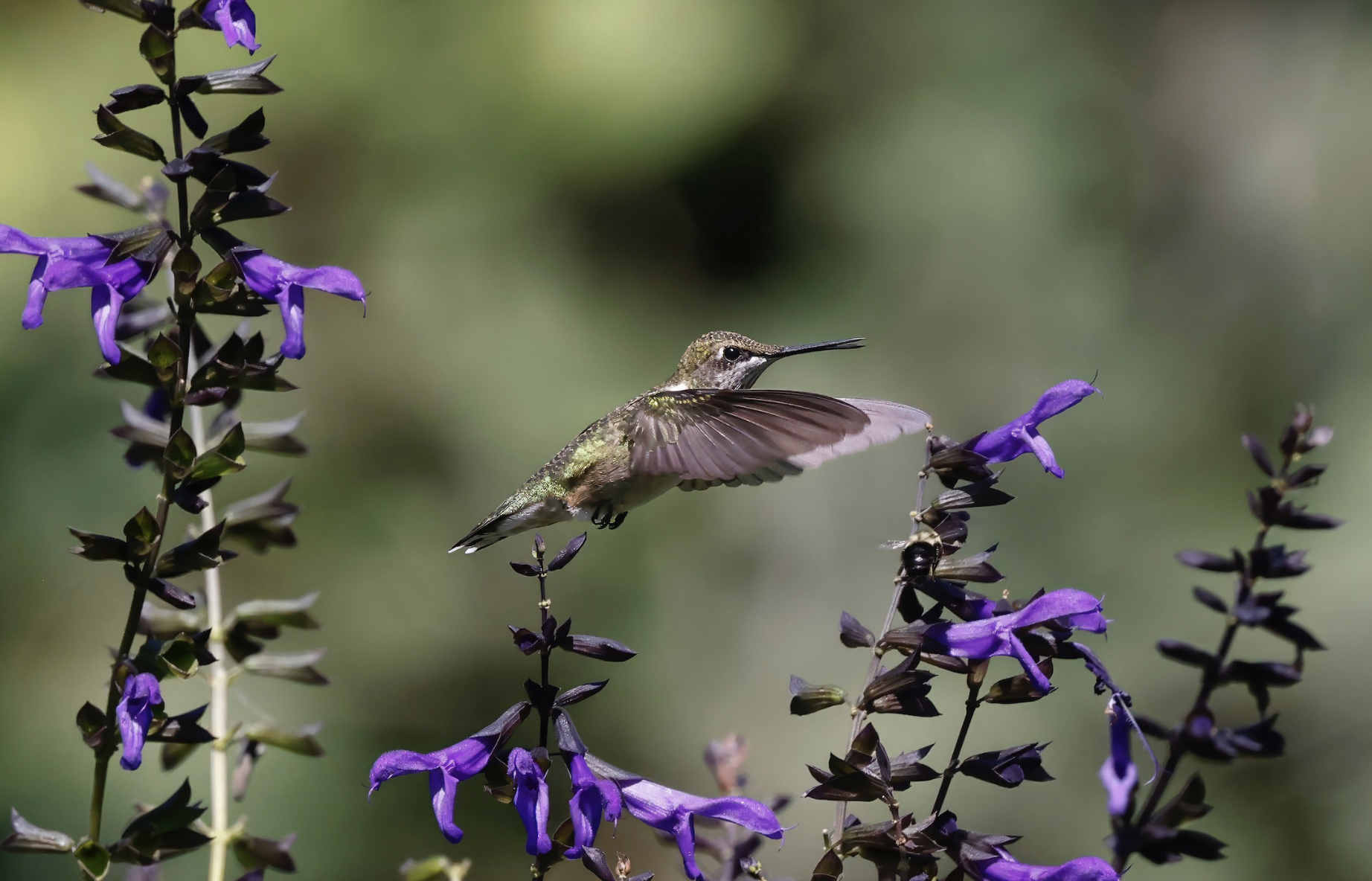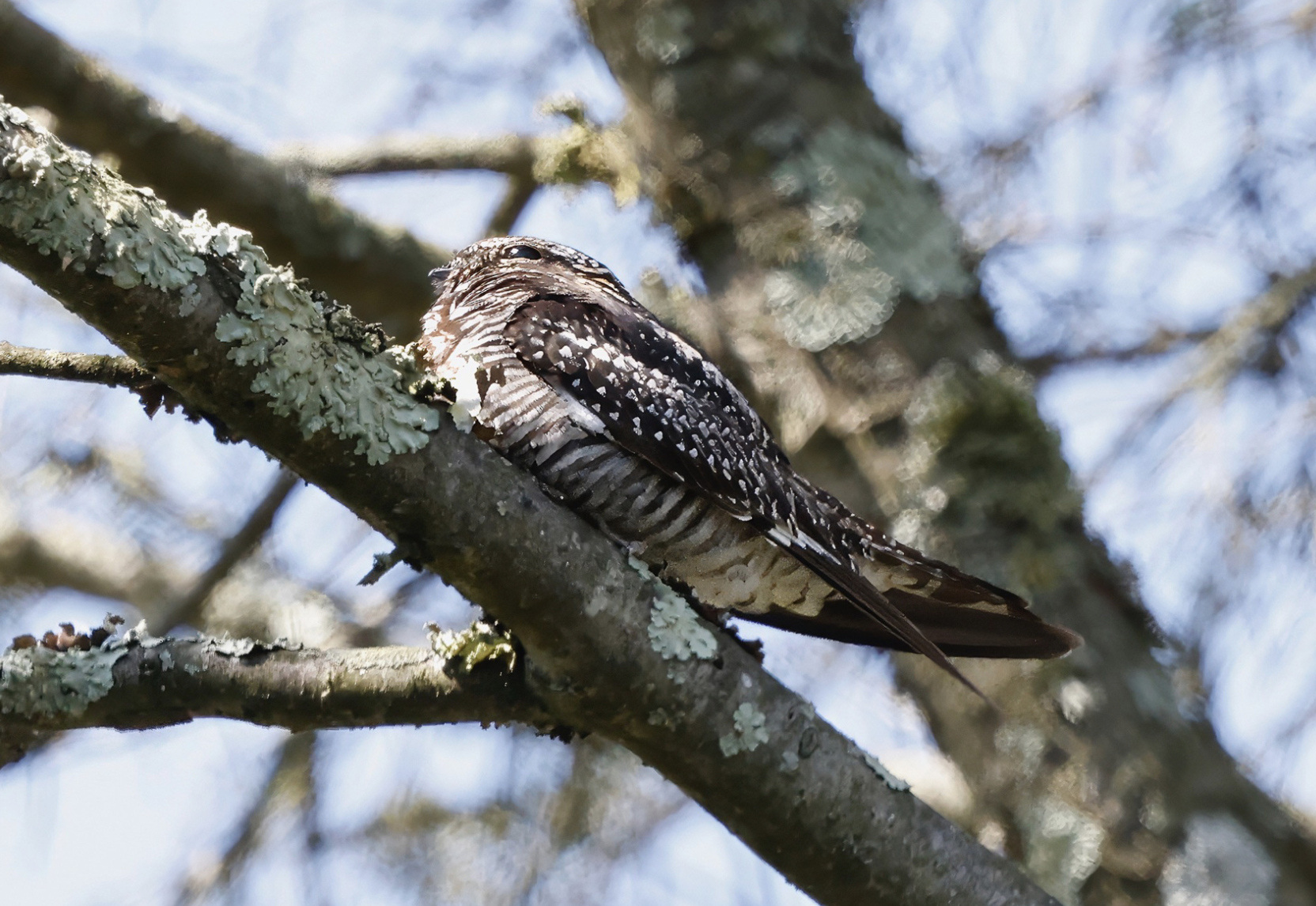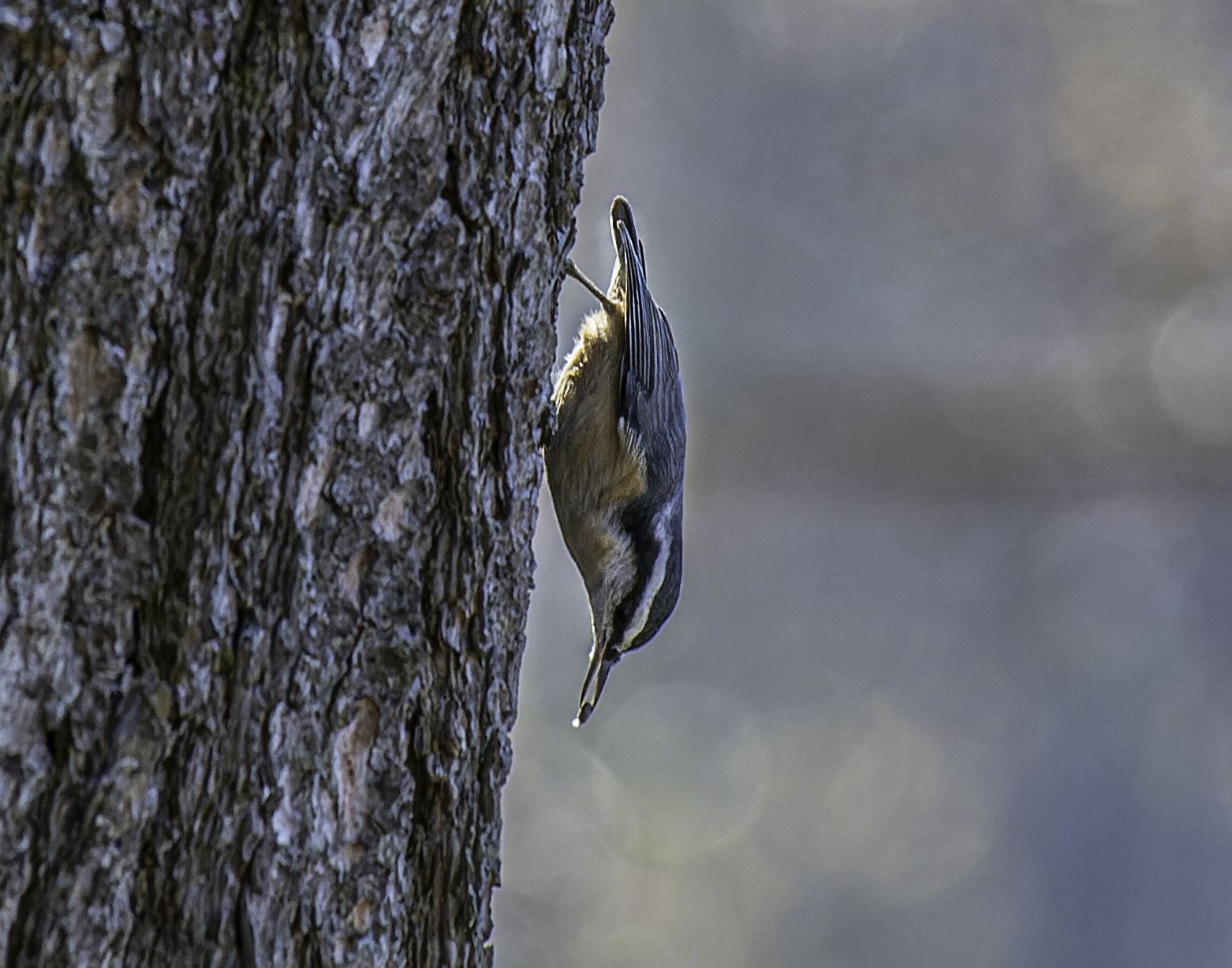2024 Fall Bird Migration Underway at Tyler
As the season changes at Tyler Arboretum so does the bird life. In the birding world, the fall spans the months of August, September, October and November. The rhythm of change has amazing predictability, but that predictability always comes with a few surprises.
The birding fall is the time when birds are finishing up their breeding cycle and preparing for winter. Birdsong is replaced by the earnest calls of hungry fledglings following their parents around as they beg for food with open mouths and fluttering wings. Birders look forward to the identification challenges provided by juvenile birds, flycatchers and famed bird guide author Roger Tory Peterson’s “confusing fall warblers.”

A fledging Song Sparrow has lost its tail due to molt. Fresh tail feathers will grow in. (Photo by Dave Eberly)

This male Downy Woodpecker is showing molt of his red nape patch. (Photo by Dave Eberly)
Almost all bird species undergo a complete post breeding molt during which feathers are entirely replaced. This means you will see a lot of scruffy looking birds around, some with bare heads or no tails. Molt requires a lot of energy so the birds stay quiet and hidden. They are also more susceptible to predators because the loss of feathers makes flying less efficient.
And then there is migration. Roughly 60% of the bird species seen at Tyler at this time of the year are considered migrants. The bird species at Tyler during fall can be divided into several categories:
- Permanent residents who live here year-round.
- Breeding migrants who arrived in the arboretum in spring to breed and are preparing to head south.
- Winter resident short and medium distance migrants who fly to the arboretum from their breeding grounds and will be spending the winter with us.
- Long distance migrants stopping for rest and fuel on their arduous journey to wintering grounds which, depending on the species, can be as far south as the far reaches of South America.

Ruby-throated Hummingbirds arrive in April to breed. They love Tyler's gardens but are surprisingly common in the woods and fields. (Photo by David Swerdlow)

A sharp-eyed Wednesday morning birder spotted this well camouflaged Common Nighthawk roosting high in a tree near the Visitor Center. It flew in overnight to rest for the day before continuing its journey at dusk. (Photo by David Swerdlow)
Having so far survived the energy demands of breeding, molt and migration, all of these birds are very hungry. They take full advantage of the calories provided by the fruits and insects that Tyler’s abundant native shrubs and trees support to fatten up for the rigors ahead. The birds may stay in Tyler for one day or several days depending on the weather, calorie needs and food supply.
Migrant warblers and flycatchers are moving through now. So far this season 20 species of wood warblers have been spotted at Tyler. Only four of those species are common breeders in the arboretum: Ovenbird, American Redstart, Common Yellowthroat, and Pine Warbler.

Tennessee Warbler (Photo by Dave Eberly)

Yellow Warbler, aptly named (Photo by Dave Eberly)

Prairie Warbler (Photo by David Swerdlow)

Black-throated Blue Warbler, also aptly named (Photo by Dave Eberly)
Hawk migration is nearing its peak. Our winter resident White-throated Sparrows, Dark-eyed Juncos and Yellow-bellied Sapsuckers will be here soon. Red-breasted Nuthatches, an annual favorite, have already arrived. Tyler Arboretum is a busy place in fall. Check it out.







